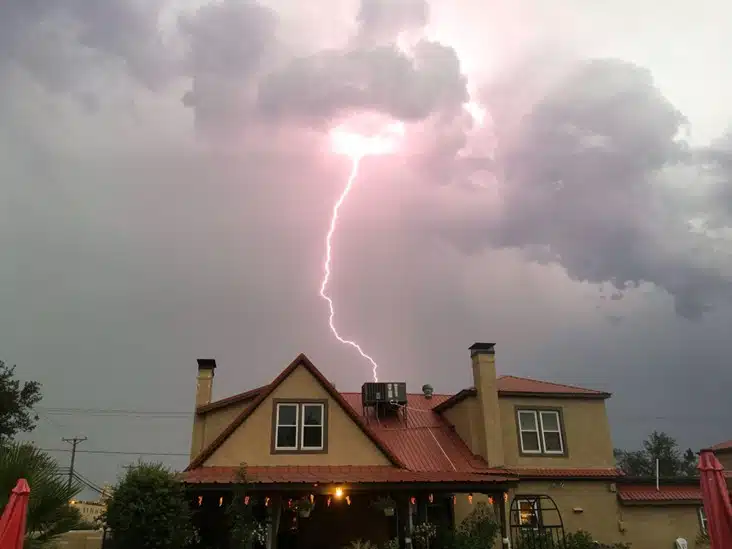In Central New York, the weather has a personality of its own, unpredictable, dramatic, and sometimes relentless. From lake-effect snow to late-summer thunderstorms, residents know that preparation is more than a suggestion; it’s a way of life. When homeowners start comparing power solutions, such as Kohler versus Generac, it’s often part of a larger plan to make sure the lights, heat, and fridge stay on no matter what Mother Nature brings.
Storm readiness in Upstate New York isn’t just about backup power; it’s about creating a home that’s resilient, efficient, and comfortable through every season. Here’s how to get started.
Understanding Central New York’s Climate Challenges
Between Syracuse’s heavy snowfall and sudden spring downpours, Central NY homeowners face year-round risks of power disruption. The National Weather Service notes that Onondaga County averages over 120 inches of snow each winter, among the highest totals in the nation. Combine that with freezing rain, high winds, and aging power lines, and you have a recipe for occasional blackouts.
Preparing for those conditions means addressing three major threats:
- Cold-weather outages – frozen pipes and heat loss.
- Summer storms – lightning, wind damage, and humidity.
- Infrastructure strain – grid overloads and maintenance shutdowns.
Each scenario calls for layered protection: reliable power, energy efficiency, and smart communication plans.
Step 1: Strengthen Your Power Backup
Backup power is no longer a luxury; it’s peace of mind. Many Central NY homeowners invest in permanent standby generators that automatically switch on when power drops.
If you’re weighing the pros and cons of generator brands, for example, Kohler versus Generac, focus on these key factors:
- Fuel source: Natural gas and propane models are ideal for homes with existing gas lines, while portable gasoline generators work well for short outages.
- Capacity: Calculate your home’s wattage needs, essential circuits like heating, refrigerator, sump pump, and lighting.
- Noise level: Check local ordinances; some neighborhoods limit generator noise during nighttime hours.
- Maintenance: Schedule bi-annual servicing and keep the area clear of snow and debris.
For smaller homes or apartments, portable inverter generators or solar-powered units can provide enough electricity for essential devices. Just remember to never operate fuel-powered generators indoors, carbon-monoxide buildup can be deadly.
Step 2: Keep the Heat (and Cool) Efficient
When storms knock out power, maintaining indoor temperature becomes critical. Simple steps can make a huge difference:
- Seal leaks: Caulk around windows, weather-strip doors, and insulate attics to retain heat.
- Use thermal curtains: These help block drafts in winter and sunlight in summer.
- Service HVAC systems annually: A well-maintained furnace or heat pump runs more efficiently and is less likely to fail under strain.
If you’re upgrading your heating or cooling systems, consider ENERGY STAR-certified models that use less energy and may qualify for federal rebates. The U.S. Department of Energy provides detailed guides on choosing the right systems for cold climates like ours.
Step 3: Protect Plumbing and Electronics
A winter outage can quickly turn into a plumbing disaster. To prevent frozen or burst pipes:
- Keep faucets dripping slightly during deep freezes.
- Open cabinet doors to allow warm air around pipes.
- Add insulation sleeves to exposed plumbing in basements and crawl spaces.
- Install water-shutoff sensors that alert you to leaks when you’re away.
For electronics, use surge protectors or whole-home surge suppression systems. Thunderstorms can cause damaging power surges even before an outage begins.
Step 4: Stock Up on Essentials Smartly

Image from Freepik
Every Central NY family should maintain a 48- to 72-hour home emergency kit. At minimum, include:
- Flashlights and extra batteries
- Bottled water (one gallon per person per day)
- Non-perishable food and manual can opener
- Blankets, gloves, and warm clothing
- First-aid supplies and prescriptions
- Portable power banks for phones and tablets
For families with young children, don’t forget diapers, comfort toys, and entertainment. For seniors, list medications, doctor contacts, and local emergency numbers.
Keep your kit somewhere accessible, not buried behind snow gear in the garage.
Step 5: Go Digital with Weather Awareness
Modern technology can make staying informed easier than ever. Download weather-alert apps like NOAA Weather Radar Live or set up local SMS notifications. Many smart thermostats and home hubs can now switch to “eco” or “safety” modes when an outage is detected, conserving backup battery life or automatically shutting down non-essential circuits.
For rural areas around Central NY where cell service can drop, consider a battery-powered NOAA weather radio.
Step 6: Think Long-Term Resilience
Preparedness isn’t just about reaction; it’s about prevention. Many local homeowners are pairing solar panels with battery storage to supplement standby generators. Others are investing in geothermal systems that operate efficiently even in deep winter.
Long-term, consider these investments:
- Roof inspection: Heavy snow can stress old structures, annual checks prevent leaks.
- Tree maintenance: Trim branches near power lines or roofs.
- Sump pump upgrade: Install a battery backup in case of basement flooding during storms.
These upgrades may even increase property value while reducing long-term costs.
Building a Resilient Community
In true Central New York fashion, resilience extends beyond individual homes. Check on neighbors during severe weather, especially seniors or those with mobility challenges. Local community centers often serve as warming or charging stations during widespread outages, stay familiar with your town’s emergency resources.
Small acts of preparedness and connection can make an outsized difference during prolonged storms.
Living in Central New York means embracing nature’s extremes, but it doesn’t mean surrendering to them. By strengthening your home’s backup power, maintaining efficient systems, and staying informed, you can weather any storm with confidence.
Preparedness doesn’t have to be overwhelming or expensive. Start small, plan smart, and you’ll be ready for whatever the next season brings, lights on, fridge humming, and family safe inside.









